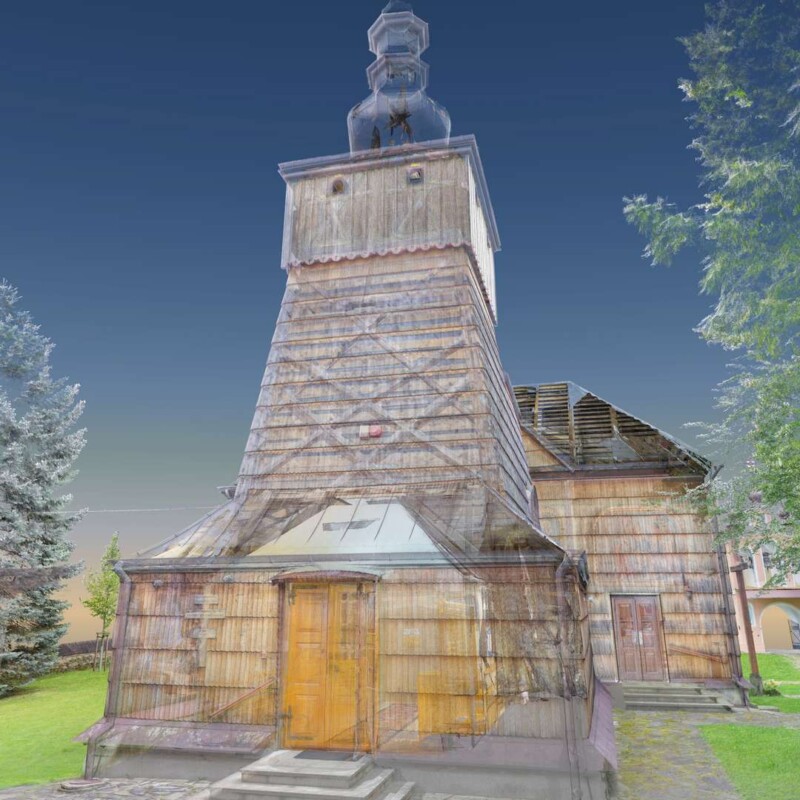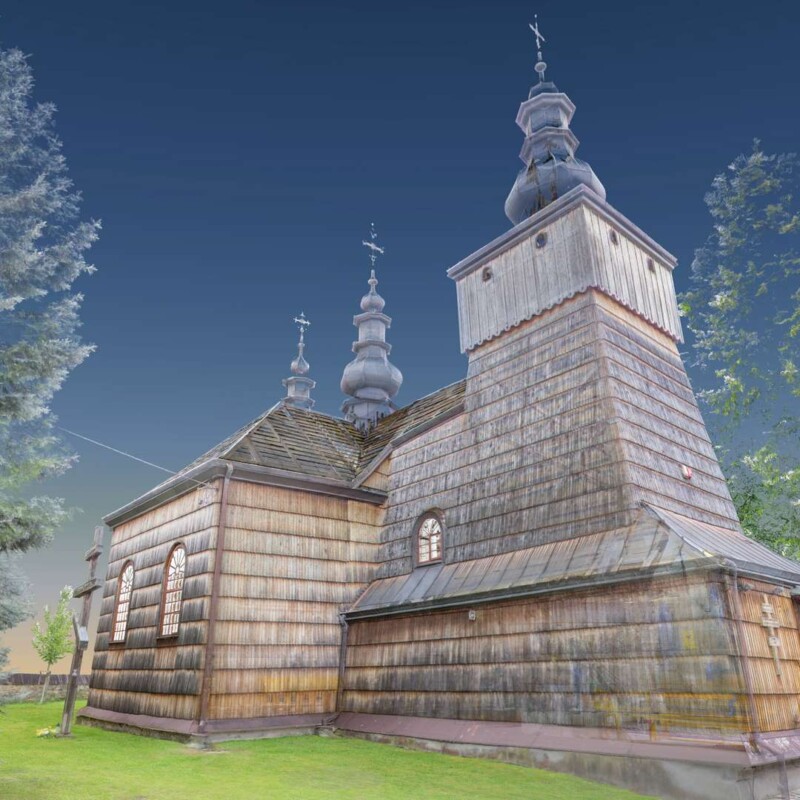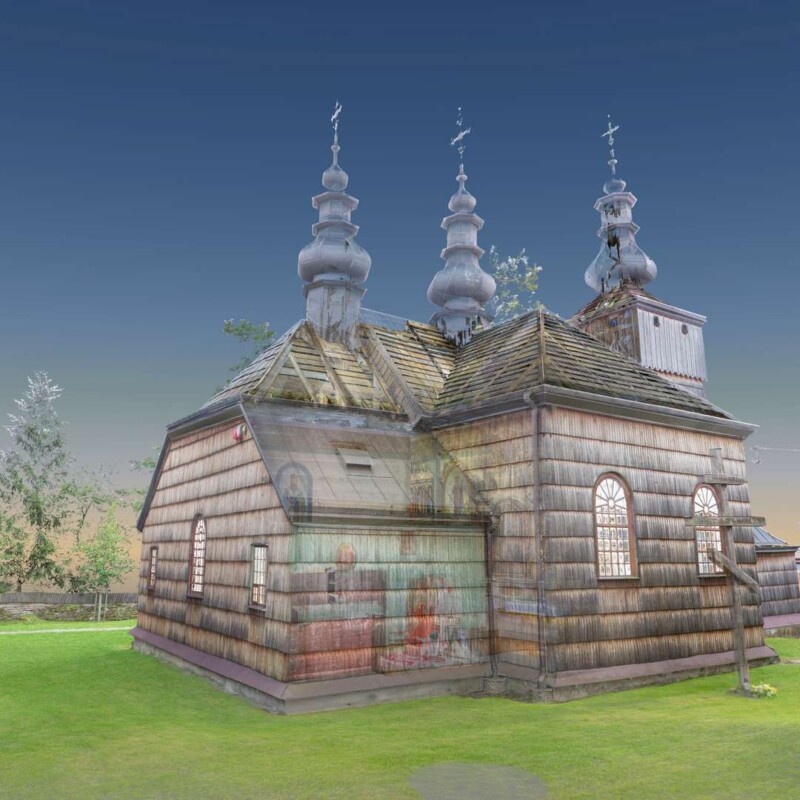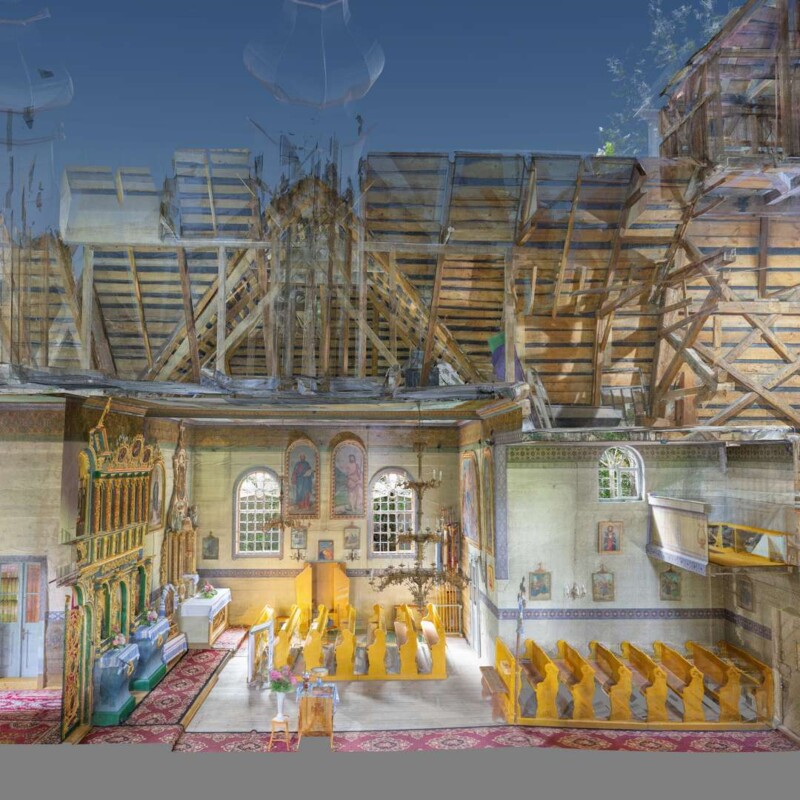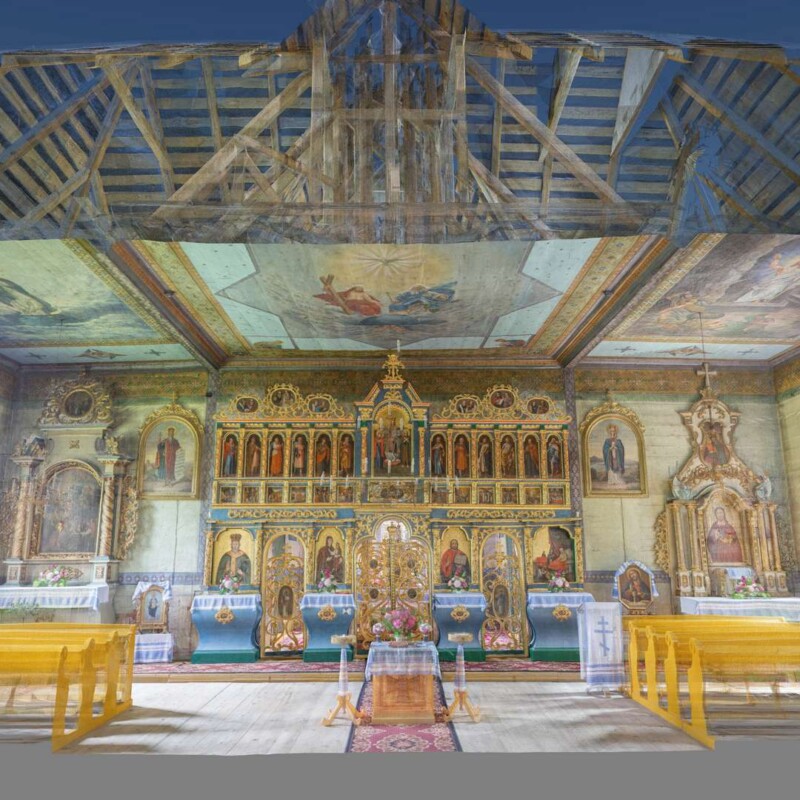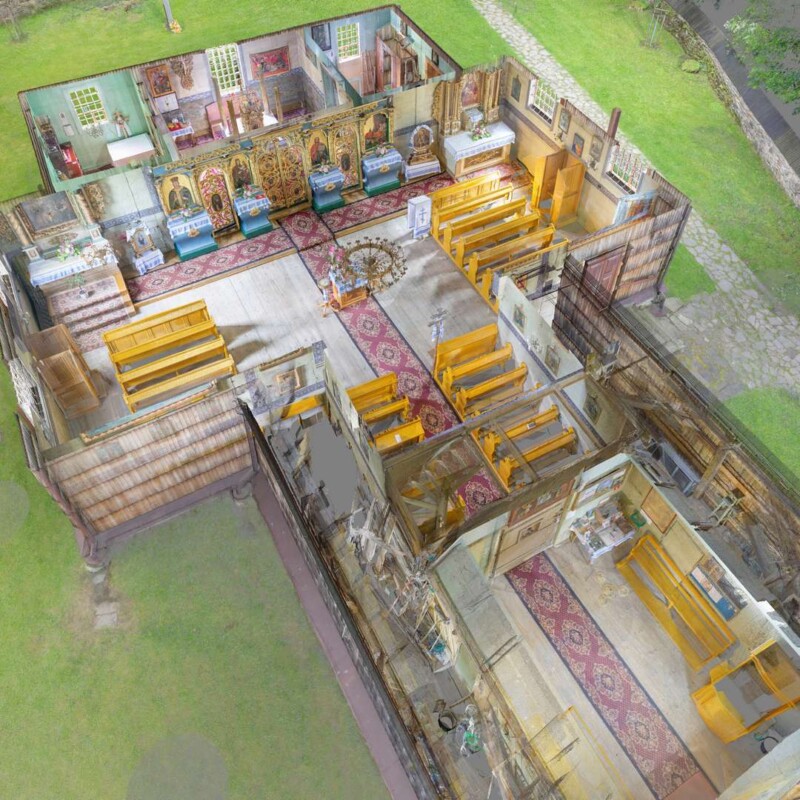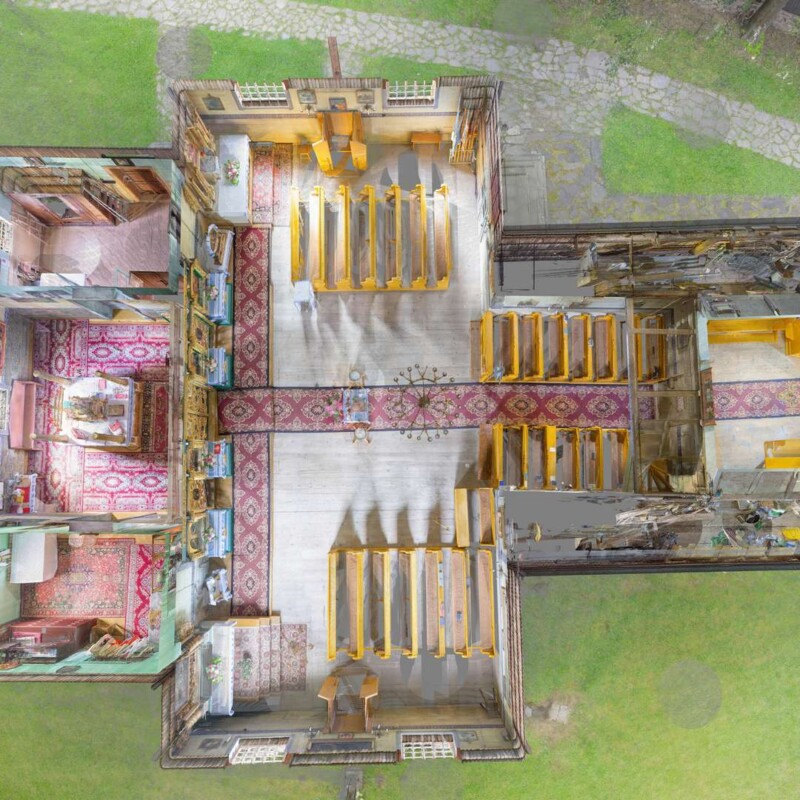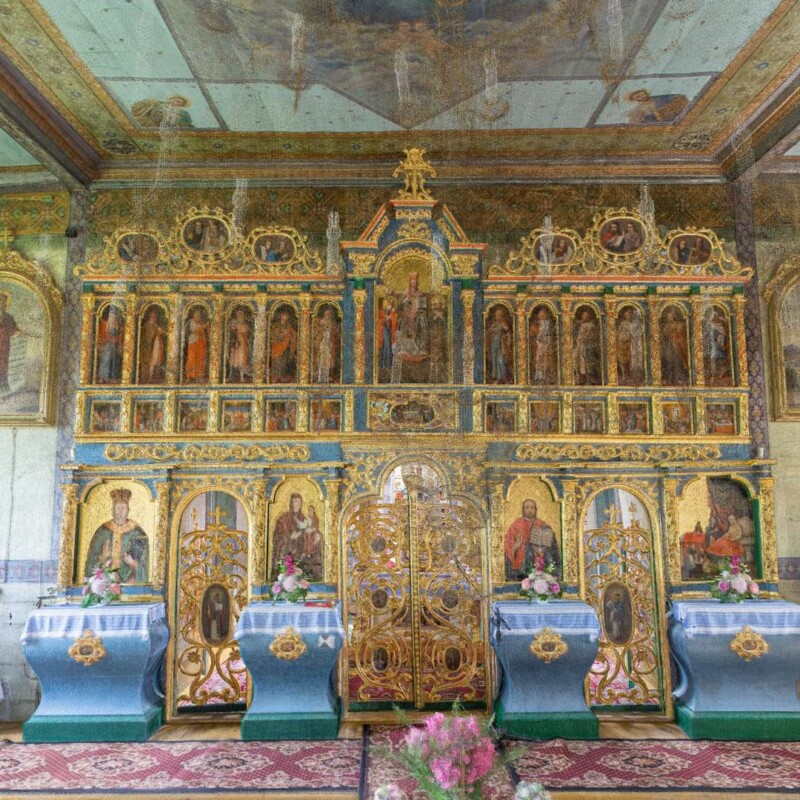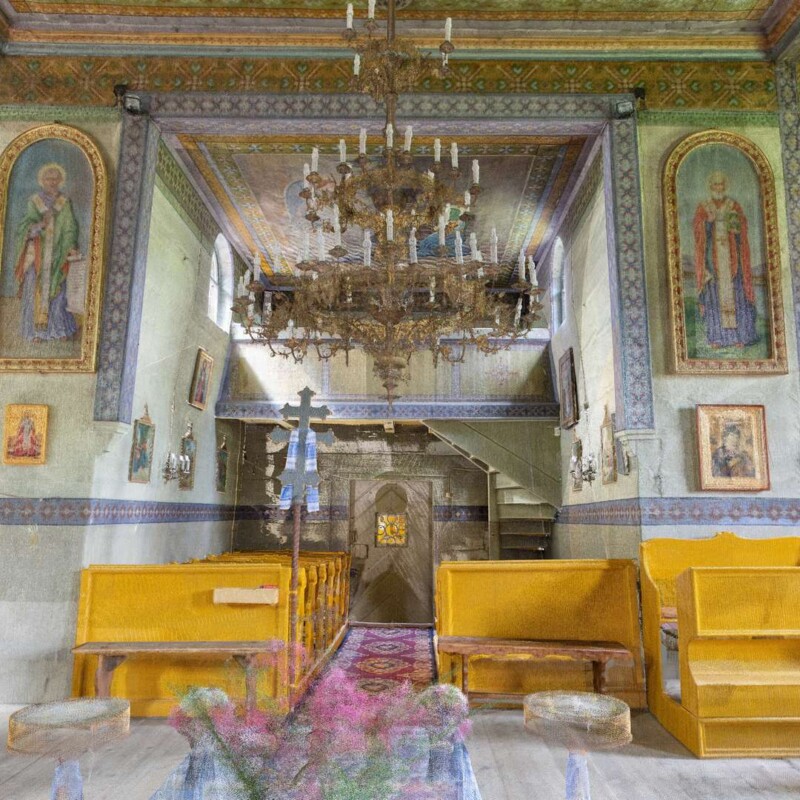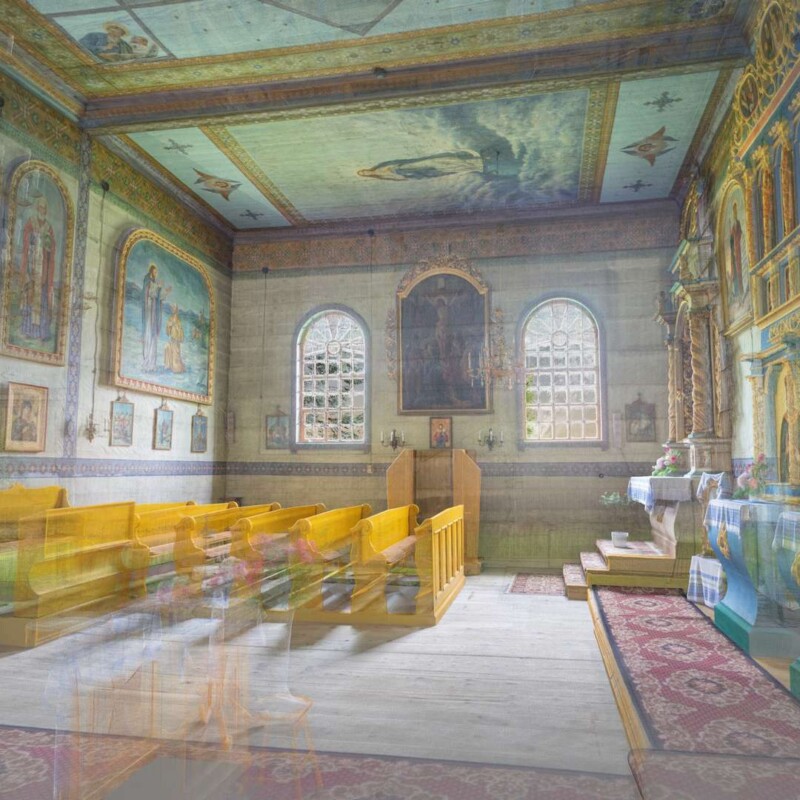Greek Catholic Church of the Nativity of the Virgin Mary, Losie
The Orthodox Church of the Nativity of the Blessed Virgin Mary in Łosie was built in 1810. For more than the next hundred years, among the congregation were the famous local tar makers, who were making real fortunes by trading tar made from kerosene and additives. However, the history of the village began much earlier. The first mention of settlements in this part of the Low Beskids comes from the 14th century. The village developed two hundred years later.
Its inhabitants were mostly Ruthenians, professing Orthodoxy and speaking their own Ruthenian language. Over time, they became known as Lemkos. In the 17th century, most of the Orthodox inhabitants of these lands followed their bishops and priests into the Union of Brest, becoming Uniates or Greek Catholics from that time on. A Greek Catholic parish was established in Łosie. At the beginning of the 19th century, the village was already known for its tar making. With more and more houses and inhabitants, there was a need to build a new place of worship, which was erected in the center of the village, based on the traditional patterns of religious architecture. It was funded by Count Stanisław Siemieński, the then owner of the village.
The church consists of three parts: a chancel with an altar, a nave and a vestibule together with a special gallery known as a babiniec. Originally, the nave would have been reserved for the male congregation, while the babiniec served the female worshippers. The walls are of a log construction. Long logs were placed on top of each other and connected at the corners with special cuts, known as carpentry locks. On the other hand, the tower over the women’s gallery was placed on pillars connected with beams. This solution is called a column-frame structure. Of course, the church is oriented with the chancel pointing to the east, where the Saviour is to reappear at the end of time.
In 1876, the church was renovated for the first time. In the 1920s, It was extended. The nave was significantly widened at that time.
In 1947, most of the Lemko inhabitants of Łosie were deported by the communist authorities to the so-called ‘regained territories’, Poland’s new post-war western frontiers, and the church was deserted. The parish was finally re-established in 1968. The most valuable items in the church are the iconostasis and the side altars. Some icons may even date back to the 17th century. The painting decor is much more recent, from the 20th century.
Application – a virtual walk around the church
The Orthodox church in Łosie has a compact outline, reaching approximately 15 metres in height, with a width of 12 metres, with a length at its longest section of around 14 metres. It features three clearly defined sections, the vestibule, the nave, where the congregation gathers, and the chancel, from which the priest celebrates Mass. To the west, the tallest of the church’s three towers rises above the vestibule and part of the nave. The middle tower rises above the nave, and the shorter of the church’s towers rises above the chancel. The roof and the spherical ‘onion domes’ of the towers, topped with a cross, are covered with sheet metal. The walls are clad with shingles, thin wooden tiles. The highest tower above the vestibule has walls slightly sloping towards each other. In the upper part there is a cubical room known as the ‘izbica’, clad with wooden planks.
In the interior of the church, one’s attention is drawn to instantly to the polychrome ceiling and wall paintings. The central section, against a brown background in the colour of light wood, depicts the Holy Trinity: Jesus Christ, God the Father and the Holy Spirit in the form of a shining dove. The figures of the Trinity are surrounded by the outline of an eight-pointed star. The Saviour stands on a dark blue globe surrounded by clouds. A red cloak covers his naked torso. Christ holds a cross leaning to the left. The grey-bearded figure of God the Father stands on the right, wearing a large blue robe. An image of the Virgin Mary in a standing position has been painted on the ceiling on the northern side. Painted predominantly in blue and white, this Mary is portrayed as a young girl with long brown hair. She is wearing a white robe. A blue cloak flows down from her shoulders.
By the windows to the south, light streams forth from a figure of Christ, who is also depicted standing. He has a beard and long hair and is clad in a white robe. The nave is separated from the chancel by a wall full of icon paintings arranged in rows, known as an iconostasis framed in dark blue and gold. The most important are the four icons placed in the first row from the bottom. The sides are decorated with richly carved gilded columns entwined with vine branches. The figures depicted in the icons are shown from the waist up, against a uniform yellowish background. Higher up there is a second row of square-shaped icons in the shape of squares. This is a something of a festive row, with each icon representing one of the most important feasts of the year. They refer to events from the New Testament: The birth of Mary, The Presentation of Mary, The Nativity, Christ’s Baptism, the Presentation of Christ, the Annunciation of Mary, Christ’s entry into Jerusalem, Resurrection, Ascension, Pentecost, Transfiguration, Dormition of Mary. In the middle there is the Last Supper.
The third row of icons is known as the Deesis Row. These are icons showing Christ on a throne, Mary, St. John the Baptist and the apostles. The Icons in this row are in semi-circular in form. The fourth row is made up of wide oval medallions depicting Old Testament prophets, shown in pairs: Habakuk and Daniel, Jeremiah and Zechariah, Aaron and Moses, David and Gedeon, Solomon and Ezekiel, Isaac and Jacob. The wall of the iconostasis contains three doors. They’re covered by gilded grilles created in the form of flourishing branches.


